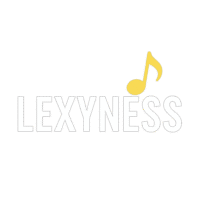Whether you’re functioning from home, taking care of a team remotely, or accessing a computer from a different location, remote desktop applications offer unrivaled versatility and ease. Remote desktop services allow users to connect to their computers or web servers from anywhere, substantially transforming how work is performed.
The term “remote desktop” refers to a variety of software solutions that help users operate a computer remotely via the internet or a local network. By utilizing remote desktop connection software, users can log in to their home or office computers as if they were sitting right before them, which is especially useful for repairing and support functions. Popular remote desktop applications, such as Microsoft Remote Desktop, TeamViewer, and AnyDesk, have actually acquired immense appeal due to their user-friendly interfaces and durable performances. Whether you call for remote access for personal use– for circumstances, activating your PC remotely to access important files– or for business situations, the different remote desktop programs accommodate varied needs successfully.
For Windows users, the integrated Microsoft Remote Desktop tool gives solid functionality for remote PC control. Users can conveniently set up a remote desktop connection, enabling them to access their Windows machines from other gadgets, consisting of Macs, tablet computers, and smartphones. This capability is crucial in remote workplace, allowing IT experts to manage servers and fix concerns without being physically present. Additionally, releasing play games remotely can boost safety and security and simplify operations by systematizing firm sources, permitting multiple users to connect safely as required.
There is likewise a boosting demand for remote desktop solutions throughout different os, including macOS and Linux. For Mac users, applications like Mac Remote Desktop and TeamViewer have been optimized for seamless availability, making certain that connections between Mac to Mac or Mac to Windows remain simple and efficient. Linux users can additionally make use of numerous open-source remote desktop applications to manage their devices. When picking remote desktop software, essential considerations such as protection, performance, and simplicity of use need to be factored in. A lot of these platforms support access through secure methods like SSH and RDP, making sure that information is transferred securely during remote sessions.
In current years, telemedicine has arised as a critical field where remote desktop innovation has actually played a considerable function. The shift towards virtual healthcare solutions has actually made technologies like remote desktop connections essential in providing prompt care and promoting continuous interaction in between medical care carriers and individuals.
What’s more, KVM (Keyboard, Video, Mouse) switchers and remote management tools offer another layer of control for IT managers taking care of multiple computers or web servers in a network. These devices allow total control over different devices from a solitary console, decreasing the problem of switching in between physical systems and providing a efficient and clean workspace. KVM switches are particularly useful in data facilities where managers have to manage many servers simultaneously. While remote desktop connections enable the use of software applications, KVM systems supply straight equipment control, supplying flexibility in taking care of resources.
For programmers and technical professionals, remote access tools assist in partnership and support across different platforms, catering to both debugging and development needs. Using remote desktop software can simplify workflows, enabling team participants in diverse places to function together on jobs in real-time.
It is critical to ensure that any remote desktop connection abides with market criteria and best techniques to secure both personal and company data successfully. Organizations needs to think about embracing remote desktop services that provide durable protection attributes to minimize threats connected with remote access.
As remote innovation evolves, so does the software available. For users seeking free remote desktop solutions, many reliable applications give crucial capabilities at no price, making them suitable for personal or light business use. While free software can be adequate for basic jobs, accessing advanced features often needs paid subscriptions. Individuals and businesses should select solutions that line up with their certain demands, stabilizing functionality with cost.
In enhancement to personal computing and business needs, remote access modern technology has actually widened to consist of different applications beyond standard desktop computers. Applications like Splashtop and Chrome Remote Desktop have simplified accessing computers on the go, encouraging users to manage their desktops anytime, anywhere.
Among the significant benefits of remote desktop innovation is assisting in remote assistance. Whether providing tech support for clients or enabling relative to receive assist with their computers, push-button control capacities simplify the repairing process. Remote assistance tools remove the need for in-person visits, allowing specialists to address concerns promptly and efficiently. This ability to troubleshoot remotely has actually come to be especially crucial throughout conditions such as the COVID-19 pandemic, where physical interactions are limited. Organizations have actually increased their fostering of remote support tools to preserve procedures while making sure worker and customer security.
For businesses crazy about improving their IT facilities, remote desktop modern technology allows them to utilize cloud solutions. Executing virtual desktop infrastructures (VDIs) enables companies to host and manage desktop computers in a virtual atmosphere, making it easier to deploy applications and preserve safety across the board. By making use of cloud-based remote desktop solutions, companies can minimize expenses connected with equipment upkeep, developing an extra reliable IT ecological community.
In conclusion, remote desktop modern technology remains to advance, providing organizations and individuals functional solutions to enhance performance, simplify procedures, and enhance partnership. The change to remote job has highlighted the value of reliable remote access, causing the advancement of different software options customized to meet user requirements. Whether it’s through direct remote desktop applications or integrated solutions in telehealth and IT management, these tools are critical for maintaining connections and making sure seamless procedures in our progressively digital world. As remote desktop solutions come to be much more sophisticated, users can expect advancements that further enhance use, safety, and overall performance, reshaping the landscape of remote communication and source management.
